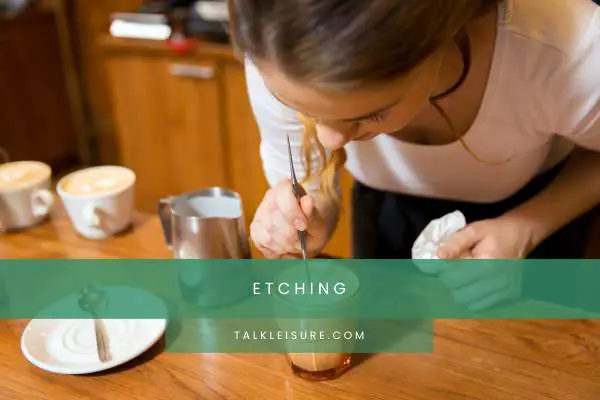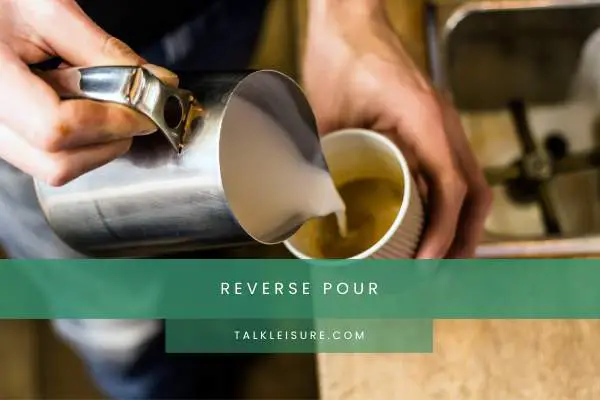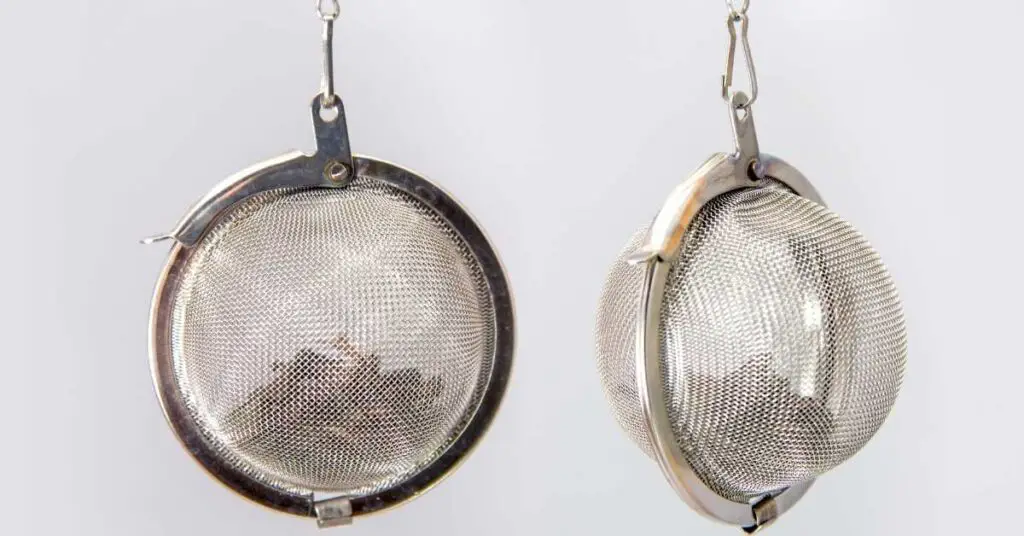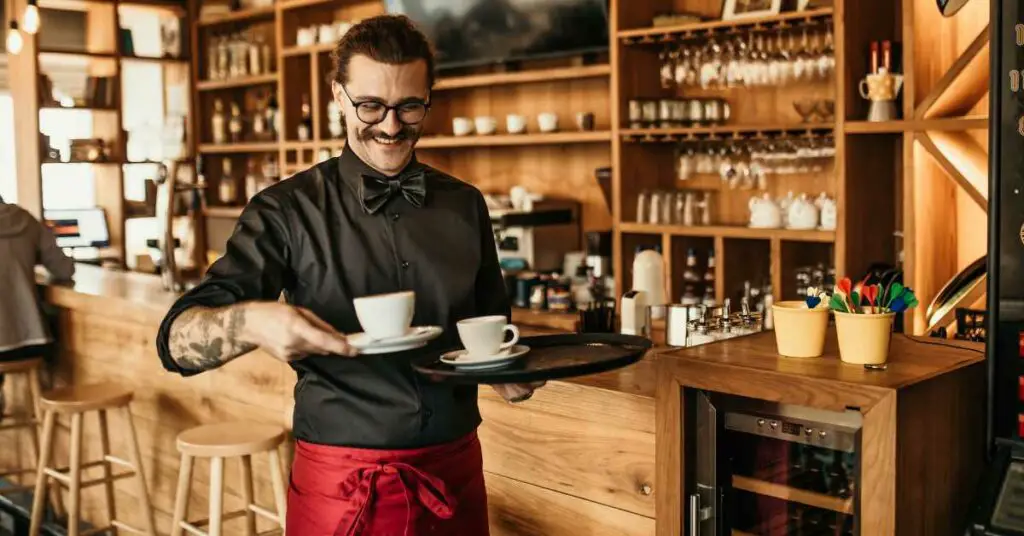Coffee art, also known as latte art, is the practice of creating designs on a cup of coffee using milk or milk foam.
It has become a popular trend in coffee shops worldwide and has elevated the coffee-drinking experience to a whole new level.
With just a few simple techniques, you can transform a plain cup of coffee into a beautiful work of art.
There are various coffee art techniques that you can learn and master to create stunning designs.
In this blog, there are five prevalent techniques to get you started.
Benefits Of Learning Coffee Art

Mastering coffee art techniques has several benefits for coffee lovers, baristas, and coffee shop owners:
- Enhanced Presentation: Coffee art adds an aesthetic appeal to the coffee, making it more visually appealing and Instagram-worthy.
It can elevate the overall coffee-drinking experience for customers.
- Customer Satisfaction: Serving a beautifully crafted cup of coffee shows attention to detail and can leave a lasting impression on customers.
It enhances the overall satisfaction and enjoyment of their coffee experience.
- Differentiation: Coffee art sets your coffee shop apart from competitors, giving it a unique selling point.
It lets you showcase your creativity and skills, attracting more customers and building a strong brand presence.
- Skill Development: Learning and mastering coffee art techniques helps baristas enhance their skills and improve their coffee-making abilities.
It adds layer of expertise to their repertoire, making them more valuable in the industry.
- Creativity and Self-Expression: Coffee art is a form of creative expression that allows baristas to showcase their artistic talents.
It provides an outlet for creativity and adds a personal touch to each cup of coffee.
By practicing and mastering these coffee art techniques, you can take your coffee-making skills to the next level and create beautiful designs that will impress your customers and leave a lasting impression.
So grab your milk pitcher and practice those pouring etching, and stenciling skills to master coffee art!
1. Free Pour Latte Art

Free-pour latte art is one of the most popular and widely used techniques in coffee art.
It involves pouring milk or milk foam directly onto the surface of the coffee in a controlled manner, creating stunning designs without using additional tools or stencils.
By manipulating the speed and angle of the pour, baristas can create intricate patterns and designs such as hearts, rosettas, and tulips.
This technique requires skill, practice, and a steady hand to achieve precise and beautiful results.
How to Master Free Pour Latte Art
- Start with the Basics: Before attempting complex designs, it’s essential to master the foundation of free pour latte art.
Begin by pouring a solid base, ensuring that the milk or foam mixes seamlessly with the coffee without any separation.
- Perfect Your Milk Texturing: The texture of your milk plays a crucial role in creating defined patterns.
Aim for velvety and smooth milk foam without any large bubbles.
Practice steaming your milk to achieve the ideal consistency.
- Master the Pouring Technique: Pouring is the key to creating intricate designs.
Start by pouring the milk into the center of the cup from a certain height to create a base.
As the cup fills, lower the pitcher and move it back-and-forth to create desired shapes.
Experiment with different pouring techniques and angles.
- Practice Patience and Control: Free pour latte art requires patience and control.
Take your time and pour slowly, allowing the design to develop gradually.
Use the weight of the milk pitcher to control the flow and adjust the speed and angle to create specific patterns.
- Learn from Others: Watch tutorials, attend workshops, and learn from experienced baristas to further enhance your skills.
Observe their techniques, ask for guidance, and seek feedback to improve your own latte art.
2. Etching

Etching is a technique used in coffee art that involves creating intricate and detailed designs on the surface of a latte or cappuccino using a fine coffee art instrument such as a toothpick or a skewer.
Unlike free-pour latte art, which relies on pouring milk or milk foam to create designs, etching allows baristas to add finer details and precision.
By carefully dragging the instrument through the top layer of foam or milk, patterns, shapes, and even images can be etched onto the surface of the coffee.
This technique requires a steady hand, attention to detail, and practice.
How to Master Etching in Coffee Art
- Prepare the Canvas: Start by creating a smooth and even layer of foam on top of your coffee.
This will act as the canvas on which you will etch your designs.
Ensure that the foam is firm enough to provide a stable surface for etching but not too thick that it becomes challenging to manipulate.
- Choose the Right Tool: Select a fine instrument that is suitable for etching, such as a toothpick, a skewer, or a specialized etching tool.
The tool should have a sharp point, allowing precise and controlled movements.
- Plan Your Design: Before you start etching, visualize the design you want to create.
It can be helpful to sketch it out on paper first to understand the shapes and lines you will be etching clearly.
- Start Etching: Gently and carefully drag the tip of your chosen tool through the top layer of foam or milk, following the lines of your design.
Take your time and apply consistent pressure to ensure even lines and shapes.
Be patient and avoid rushing, as mistakes can be difficult to fix.
- Add Details: Once you have created your design’s main shapes and lines, you can add finer details by lightly dabbing or dragging the tool on the foam.
This can create shading, texture, or additional elements that enhance the overall look of your etched design.
- Experiment and Practice: Etching in coffee art is a skill that requires practice and experimentation.
Try different tools, techniques, and designs to find your own style and improve your etching abilities.
Learn from other baristas, watch tutorials, and seek feedback to refine your skills further.
Etching in coffee art offers a unique way to elevate and personalize your latte or cappuccino creations.
By mastering this technique, you can impress your customers, showcase your creativity, and add a touch of artistry to their coffee-drinking experience.
So grab your tool, prepare your canvas, and start etching stunning designs on your next cup of joe.
3. Stenciling
Stenciling is a widespread technique in coffee art that adds intricacy and precision to your creations.
It involves using pre-made stencils to create detailed designs on the surface of a latte or cappuccino.
With stenciling, baristas can replicate complex patterns, logos, or images onto the foam or milk top.
This technique is great for adding a professional and artistic touch to your coffee beverages.
To master stenciling in coffee art, here are some key steps to follow:
- Choose the Right Stencil: Start by selecting a stencil that matches the design you want to create.
Stencils can vary in size, shape, and complexity.
Look for stencils that are made specifically for coffee art and ensure that they are made from food-grade materials.
- Position the Stencil: Once you have your stencil, carefully position it on top of the foam or milk surface.
Ensure that it is flat and snug against the cup to prevent any unwanted smudging or movement.
- Prepare the Sprinkler: To create the design, you will need a fine powder or sprinkler that contrasts with the color of the foam or milk.
Depending on the desired effect, you can use cocoa powder, cinnamon, colored sugar, or even edible glitter.
Fill the sprinkler and get ready to add the finishing touches to your design.
- Apply the Sprinkler: Now comes the exciting part.
Hold the sprinkler with your dominant hand and carefully sprinkle the powder over the stencil.
Make sure to do this evenly and avoid any excess or uneven distribution.
Slowly lift the stencil away, revealing your beautifully created coffee art design.
- Touch-Ups and Finishing: After removing the stencil, take a moment to assess the design.
If any areas need touch-ups or adjustments, use a small brush or toothpick to fix them carefully.
This will ensure that your design looks sharp and precise.
- Practice Makes Perfect: Like any skill, stenciling in coffee art requires approach.
Experiment with different stencil designs, colors, and patterns to find what works best for you.
Keep going even if your first attempts are not perfect.
Keep practicing; with time, you’ll improve your technique and create stunning stenciled coffee art.
Stenciling is a fantastic technique that allows you to create professional-looking designs easily.
4. Reverse Pour

The reverse pour technique is a popular and impressive method used in coffee art to create stunning designs and patterns on the surface of a latte or cappuccino.
Unlike traditional pour techniques, where the barista pours milk into a cup of espresso or coffee, the reverse pour technique involves pouring coffee or espresso onto a layer of milk.
This technique allows the barista to create intricate and mesmerizing designs by manipulating the coffee as it flows through the milk.
To master the reverse pour technique, here are some key steps to follow:
- Start with a clean canvas: Prepare a cup of steamed milk in a suitable size and shape.
Ensure the milk is frothed correctly to create a creamy and velvety texture.
- Prepare the espresso or coffee: Brew a shot of espresso or coffee separately.
Ensure that it is flavorful and prepared to your desired strength.
- Position the cup: Hold the cup at an angle, with one hand holding the handle and the other supporting the base.
Tilt the cup slightly, allowing the milk to flow towards the edge.
- Begin the pour: With a steady hand, pour the espresso or coffee onto the milk, close to the cup’s edge.
Aim for a smooth and controlled flow, gradually moving towards the center of the cup.
- Create designs: As the coffee flows, manipulate the cup to guide its movement and create beautiful patterns.
You can create hearts, flowers, or even more complex designs by gently swirling the cup or using a toothpick to draw lines and shapes.
- Practice and experiment: Mastering the reverse pour technique requires practice like any skill.
Experiment with different pouring techniques, cup angles, and patterns.
Feel free to try new ideas and adjust your technique based on the desired result.
The reverse pour technique is a fantastic way to elevate your coffee art skills and create visually stunning beverages.
It lets you showcase your creativity and attention to detail while impressing your customers with beautiful designs.
With practice and patience, you can master the reverse pour technique and take your coffee art to the next level.
5. Layering
Coffee art has become an increasingly popular trend, captivating both coffee lovers and art enthusiasts alike.
One of the techniques that baristas frequently utilize to create visually appealing designs is the layering technique.
This technique involves pouring different layers of coffee and milk to create distinct patterns and textures.
In this blog post, we will delve into the intricacies of the layering technique and provide valuable tips on mastering it for your coffee art creations.
The layering technique is all about creating contrasting layers that blend seamlessly to produce eye-catching designs.
To master this technique, it is essential to understand the process involved.
Firstly, the barista must prepare two separate components – the base layer of milk and the top layer of coffee.
Steamed milk is poured into the cup, creating a solid foundation for the coffee art.
This is followed by a careful and controlled pour of the coffee onto the milk, allowing it to settle slowly, creating distinct and visually pleasing layers.
There are a few key considerations to remember to achieve a successful layering effect.
Ensuring that the milk is steamed correctly is crucial to achieve the desired texture and consistency.
This creates a stable foundation for the coffee to layer upon.
Additionally, the milk and coffee temperature should be carefully controlled, as this can impact the separation and layering process.
The barista must also possess a steady hand and a keen eye, as the pour should be controlled and deliberate, allowing the coffee to gradually form layers without disturbing the milk underneath.
Mastering the layering technique requires practice and experimentation.
Baristas can experiment with different pouring techniques to create unique designs and patterns.
With practice, patience, and a passion for coffee, you can perfect the layering technique and produce stunning coffee art that will mesmerize and delight all who witness it.
Embark on this artistic journey today and unlock your full potential in coffee art.
Conclusion
To truly master the art of coffee art, practice and experimentation are key.
Before diving into the more complex techniques, ensure you have a solid foundation in the fundamental skills of coffee art.
This includes mastering the art of steaming milk, pouring espresso shots, and creating a smooth canvas for your designs.
Coffee art takes time and precision.
Take the time to carefully pour each layer and allow it to settle before moving on to the next.
Rushing the process can lead to messy designs and blended layers.
Having the right tools can make a world of difference in your coffee art creations.
Invest in a good-quality espresso machine, a milk frother, and various pouring tools such as jugs, spoons, or even latte art pens.
These tools will give you more control and enable you to create finely detailed designs.
Coffee art is a continually evolving art form, so be open to learning from others.
The key to mastering any skill is practice.
Dedicate time each day to perfecting your coffee art techniques.
By following these tips and staying dedicated to improving your skills, you can become a true coffee art master.
Remember that mastering coffee art is a journey, and each cup of coffee is an opportunity to express your creativity and passion.
So, embrace the artistry, enjoy the process, and savor the satisfaction of creating beautiful coffee art that will impress and delight your customers.
Related Posts: 7 Best Coffee Subscription Boxes for Every Type of Coffee Drinker











